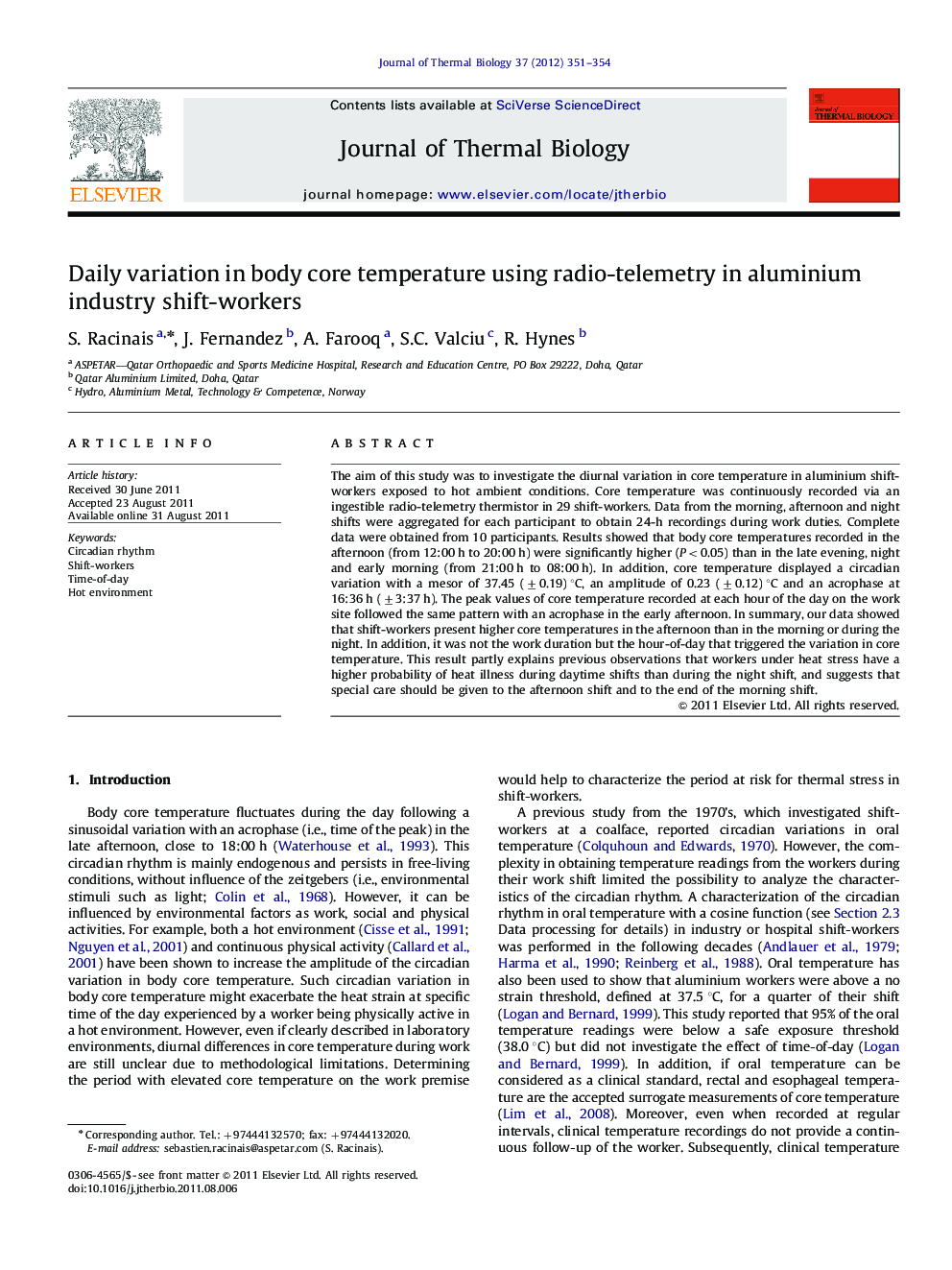| کد مقاله | کد نشریه | سال انتشار | مقاله انگلیسی | نسخه تمام متن |
|---|---|---|---|---|
| 2843301 | 1166085 | 2012 | 4 صفحه PDF | دانلود رایگان |

The aim of this study was to investigate the diurnal variation in core temperature in aluminium shift-workers exposed to hot ambient conditions. Core temperature was continuously recorded via an ingestible radio-telemetry thermistor in 29 shift-workers. Data from the morning, afternoon and night shifts were aggregated for each participant to obtain 24-h recordings during work duties. Complete data were obtained from 10 participants. Results showed that body core temperatures recorded in the afternoon (from 12:00 h to 20:00 h) were significantly higher (P<0.05) than in the late evening, night and early morning (from 21:00 h to 08:00 h). In addition, core temperature displayed a circadian variation with a mesor of 37.45 (±0.19) °C, an amplitude of 0.23 (±0.12) °C and an acrophase at 16:36 h (±3:37 h). The peak values of core temperature recorded at each hour of the day on the work site followed the same pattern with an acrophase in the early afternoon. In summary, our data showed that shift-workers present higher core temperatures in the afternoon than in the morning or during the night. In addition, it was not the work duration but the hour-of-day that triggered the variation in core temperature. This result partly explains previous observations that workers under heat stress have a higher probability of heat illness during daytime shifts than during the night shift, and suggests that special care should be given to the afternoon shift and to the end of the morning shift.
► Core temperature in aluminium shift worker displayed circadian variations.
► Temperature is higher in the afternoon than in the morning or the night.
► It was not the work duration but the hour-of-day that triggered these variations.
► The amplitude of variation is relatively small but the mesor is elevated (37.45 °C).
Journal: Journal of Thermal Biology - Volume 37, Issue 4, July 2012, Pages 351–354